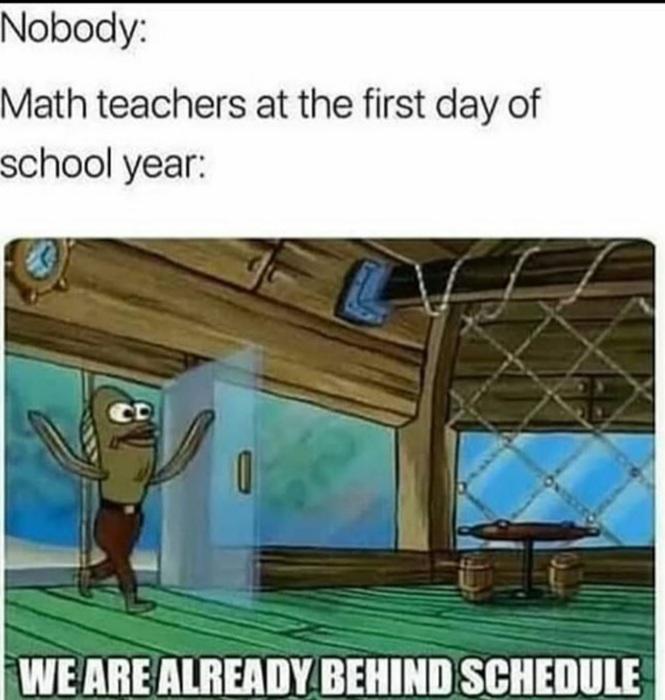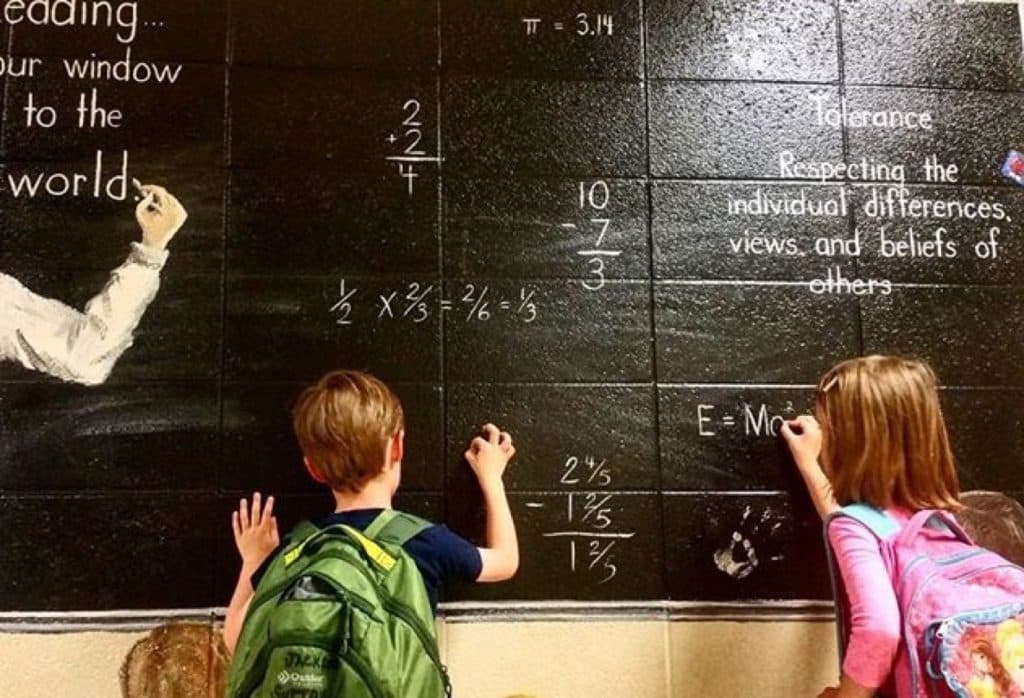Getting students interested in math is difficult by definition, so a good lesson plan can make or break your class. Planning your lesson, however, is easier said than done. It can take several hours to develop a well-structured lesson plan, and you may still miss some crucial details if you’re not experienced enough or in a hurry to get it done ASAP.
In times of urgency, instead of writing a lesson plan from scratch, you can turn to Teach Simple and download a high-quality, ready-made lesson plan that you can use instantly with little to no adjustments.
We’ll show you where to find the best math lesson plans online if you’re looking for some inspiration or are too busy to come up with your own. We’ll also show you how you should structure a lesson plan if you choose to write your own.

Source: @cafealternativo via Twenty20
Table of Contents
- Why You’ll Love Teach Simple—Math Lesson Plan Examples
- Does It Pay Off To Pay for Online Math Lesson Plans?
- Teach Simple—Best Math Lesson Plans at the Best Price
- How To Structure Your Math Lesson Plans
- Time To Plan Your Math Lesson
Why You’ll Love Teach Simple—Math Lesson Plan Examples
We have math lesson plans targeting students from pre-K to grade 12 and focusing on different math branches. You can check out our database and download all the plans that catch your eye without spending $100+. Here’s our top pick:
Sign up for Teach Simple and start exploring and downloading our lesson plans for free.
Does It Pay Off To Pay for Online Math Lesson Plans?

Source: KnowYourMeme
A math lesson plan lays out your entire lesson and provides a schedule that helps you know exactly what you need to do and for how long. A lesson plan requires dedication and attention to detail—it can take hours to make, and if you lack experience, you might leave out some crucial elements.
If you’ve never made a lesson plan before or are staring at an empty sheet of paper on Sunday evening, the internet is your friend. You can find thousands of materials online, some of which you must pay to use. So, with an abundance of free materials available, does it make sense to hand out extra cash for a lesson plan?
Free Math Lesson Plans
Math plans that come for free are great if you’re looking for inspiration while writing your own plan. If you want to use a free plan for your lesson, be ready to make a lot of adjustments to make it work.
The problem is—these free lesson plans are free for a reason. When you download one of these, you’ll find that they:
- Don’t align with curriculums and basic standards
- Are repetitive and have vague objectives
- Focus on the teacher and not on the students
- Don’t take into account that students need different activities to learn the same material
- Have too few assessment methods
- Don’t come with a defined timeline
- Don’t promote original thinking
Paid Lesson Plans for Math
You’ll need to pay to take the ride if you want something you can download and use instantly for your lesson. You’ll find plenty of paid materials (not only lesson plans) online that can slot right into your teaching style without any adjustments. As always, when buying online, you need to make sure you do so from a trusted source that will give you a quality product.
The main issue with buying lesson plans is that the majority of websites for teaching materials charge per download and offer only a small preview before you buy the full product. This means that you can end up spending hundreds of dollars on lesson plans that turn out sub-par and unusable for what you need.
The only way to avoid that is to find a trustworthy source that doesn’t force you to shell out money every time you find cute or promising material you want to try out. That’s where Teach Simple comes in.

Source: @beachbumledford via Twenty20
Teach Simple—Best Math Lesson Plans at the Best Price
Teach Simple is a subscription-based source of online materials that offers top-quality lesson plans and other teaching supplies created by seasoned teachers. Whenever you download something from Teach Simple, you’ll know that a colleague who has walked the same line has made it. Every piece of material we publish is reviewed by teachers who’ve also spent years in the classroom and know what it takes for a lesson to follow all standards.
The beauty of Teach Simple is that once you subscribe, you can make unlimited downloads from our database without any additional payments. Better yet, you can sign up for free with our 30-day trial and give it a test ride.
You can use Teach Simple to download math lesson plans (and for other subjects) for every grade from preschool to high school. Aside from lesson plans, you can download any additional material to spice up your lessons and become students’ favorite. Use our marketplace to find worksheets, projects, games, ebooks, flash cards, graphics, weekly lesson plan templates, and audiobooks. We also have specific lesson plans for ESL students and materials for those in need of speech therapy and social-emotional learning.
Teach Simple is dedicated to making teaching an easier and better-paid profession. When you sign up, you’ll help your colleagues make a better living since 50% of our monthly revenue goes to our contributors.

Source: @beachbumledford via Twenty20
How To Structure Your Math Lesson Plans
If you are a rookie teacher and want to practice, or you have some time on your hands and want to devise your own lesson plans, there are some rules you should abide by. Knowing how to write a lesson plan can help you distinguish a quality lesson plan from a bad one more easily.
How you organize your lesson plan depends on your teaching style and students’ grade. You can find various lesson plan templates that focus on different parts of a lesson plan, but every good lesson plan must consist of:
- Lesson plan objective
- Learning activities
- Materials
- Assessment methods
Lesson Plan Objective
If you’re writing a lesson plan, you should start with a lesson plan objective. The objective needs to give you a clear idea of what you want to achieve with your lesson, how you want to do it, and how you will assess whether you’ve succeeded. Every other component of your lesson plan is there to help you attain your goal.
Your objective depends on the curriculum and the age group you teach. Here are some examples of math objectives for various grades:
| Grade | Math Lesson Plan Objective Examples |
| Kindergarten | Fluently add and subtract from 1 to 10 Name shapes accurately regardless of their orientation Represent addition and subtraction with fingers, objects, and drawings Decompose numbers from 1 to 10 into different pairs (e.g., 5=2+3 and 5=4+1) |
| 1st grade | Count backward from 20 to 0 Tell and write time in hours and half-hours using an analog clock Draw two-dimensional shapes Partition circles into two and four equal parts Tell the difference between odd- and even-paired objects |
| 2nd grade | Know by heart all sums of two one-digit numbers Fluently add and subtract from 1 to 20 Count up to 1000 by 5s, 10s, and 100s Draw a bar graph to represent data sets |
| 3rd grade | Apply properties of operations to multiplication and division Fluently multiply and divide from 1 to 100 Represent fractions on a number line diagram Measure areas by counting unit squares |
Learning Activities
Learning activities help you choose methods of learning for your students, i.e., what they will do to take in the new material you present to them. You should try to be as creative as your curriculum allows you to be. Art teachers have it easier when it comes to making lessons fun, but that doesn’t mean you can’t be your students’ favorite.
Try to come up with various activities that will make learning math playful for all of your students and get them engaged and related to the material so that they want to learn what you have to say.
Every group is different, and some students will react better to specific activities while others won’t relate to them. As a teacher, you’ll know your kids best and what can work for them. Some activities that make math fun include:
- Play Bingo with simple equations on the card
- Play games with money or a point system
- Bake cookies and focus on mathematical questions and decisions while selecting ingredients
- Play a find and measure game
- Draw a hypercube
- Play a memory game with math equations
- Add classmates to a Venn diagram
- Calculate costs for a dream vacation

Source: @TerezaT via Twenty20
Materials
Materials are essentially a list of all items you’ll need to carry out your lesson. Don’t think textbooks only—go for every detail, such as:
- Markers
- Projector
- Game pieces
- PowerPoint presentations
- Notebooks
- Pencils
- Pens
- Stickers
Assessment Methods
Assessment methods serve to help you judge whether your lesson was successful or not. Try to think of ways to assess whether your students have gained a new skill or knowledge and to what degree (e.g., they need to know how to count at least to 500).
Assessment methods shouldn’t only be a test to grade your students. If you’re creating a single-lesson plan, try to use exit slips, group activities, and presentations to judge the success of your lesson.
Time To Plan Your Math Lesson
Now that you know the ropes of making a math lesson plan, it’s time to get to work. If you want your students to get excited about learning math and remain motivated to gain new skills, you’ll need a lesson plan every time you enter the classroom—a lesson plan that includes varying activities that are always engaging and playful.
Don’t worry—if it seems too complicated and time-consuming, you’ll always have Teach Simple’s lesson plans made by teachers who have been in your shoes and know how to come up with a math lesson plan that will benefit students of all ages.
